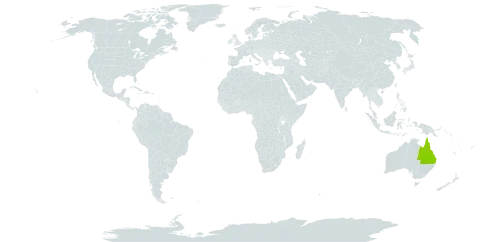Subshrub, stems trailing, to 0.5 m tall; indumentum grey to tan-grey, the hairs mostly coiled, some also spreading. Leaves: stipules 1–2 mm long; petiole 1.5–2 mm long; lamina very narrow-elliptic or lorate to linear, 1.5–4.5 cm long, 2–3.3 mm wide, margin ± recurved, upper surface with slightly raised veins, glabrous. Inflorescences mostly of 2 flowers, sessile; pedicel 1.5–1.8 mm long, bract at or near base; bract and bracteoles narrow-ovate, 1–2 mm long. Calyx 4.5–5.2 mm long, tube 2.2–2.5 mm long, upper lip 3.5–4 mm wide. Standard c. 9 mm long, flare yellow; wing 3–3.5 mm wide. Pod densely hairy, sessile. Aril of seed 2.8 mm long, expanded distally, hilum c. 1 mm long.
